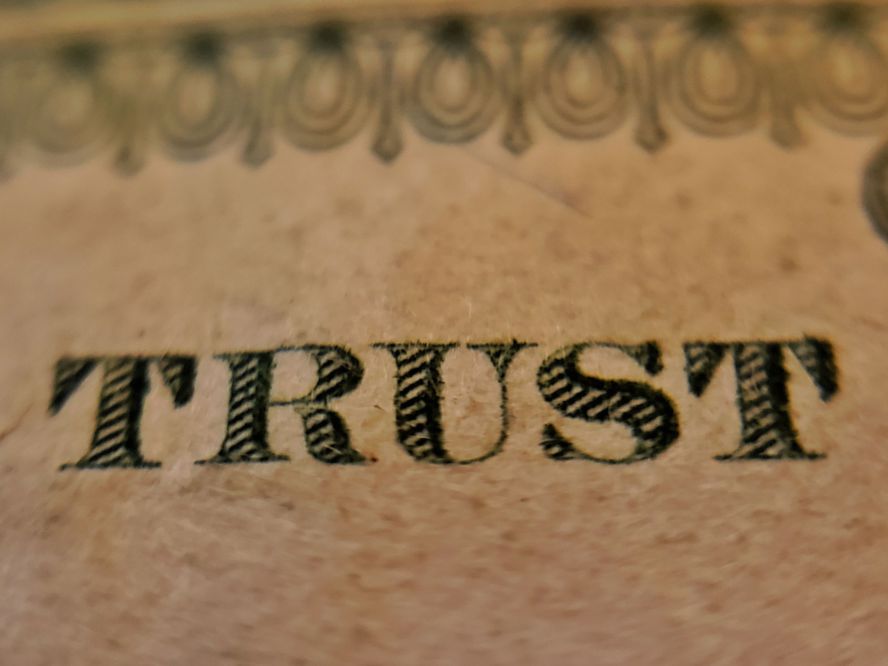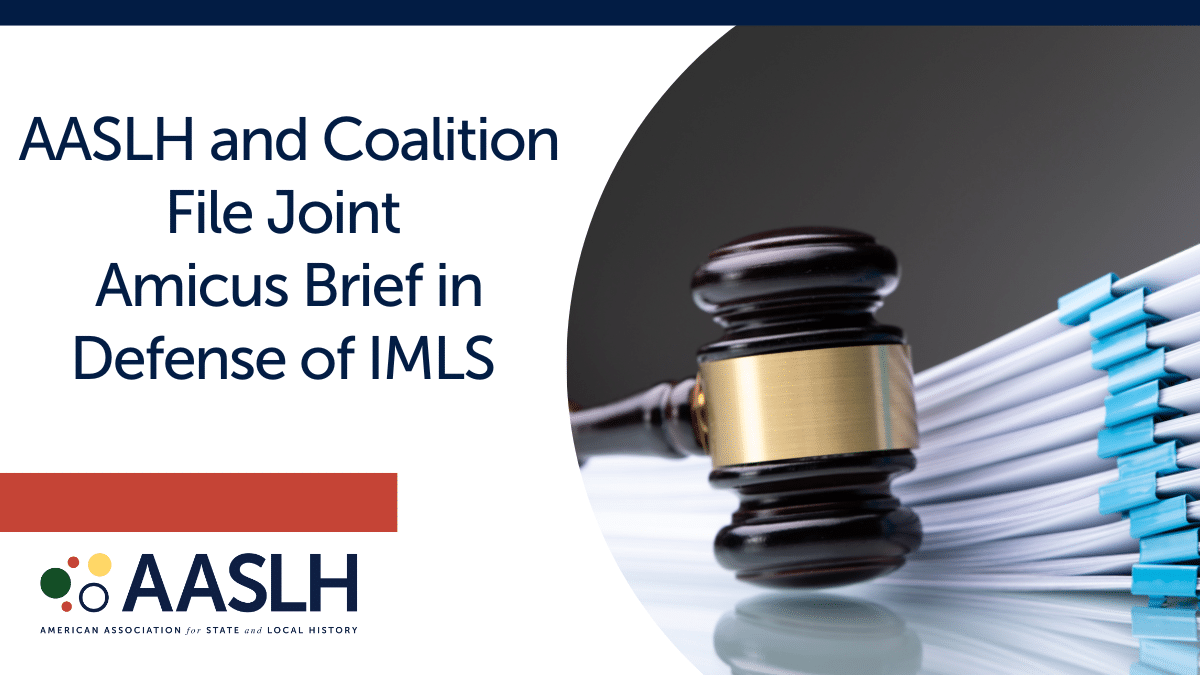
By John Garrison Marks, Director, AASLH Public History Research Lab
Americans trust history museums—or so we like to tell ourselves. Back in November on the American Alliance of Museums (AAM) Center for the Future of Museums’ blog, history and museum veteran Jim Gardner asked: what does it mean for museums to be trustworthy? Responding to AAM’s most recent Museums and Trust report, Gardner questioned the tendency of museum professionals generally, and history museum professionals in particular, to congratulate ourselves for being trustworthy. Americans’ high level of trust in museums, he points out, may very well be unearned.
Gardner argued that the public’s reported trust in history museums “was based on an assumption by the public that museums offer unmediated experiences” and thus “was not something to be proud of.” Recent research backs up these claims, revealing that Americans’ faith in museums is primarily predicated upon their belief that objects and documents cannot lie to them, a misunderstanding of museum practice that belies a widespread public skepticism about professional historical interpretation. Americans’ trust in museums should be cause for concern, not celebration.
New research also offers a way forward, however; an opportunity for rebuilding a foundation for more authentic trust with our audiences.
By more effectively and carefully articulating the nature of historical work, historians and museum professionals can get on the same page with our audiences and foster trust built on mutual understanding.
Over the past thirty years, multiple studies have investigated the extent to which people trust various sources of information about the past, with museums nearly always coming out on top. Foundational among them is The Presence of the Past, a study conducted by Roy Rosenzweig and David Thelen in the 1990s. As Gardner points out in his AAM piece, when Rosenzweig and Thelen asked Americans who they trust for information about the past, history museums ranked as more trustworthy than books, college professors, and nearly every other source. Although the rest of the book offers a deep, nuanced portrait of American engagement with history, for many public history and museum professionals the study has been boiled down to this single talking point about trust.
 Even though the study was conducted in the ’90s—before widespread access to the internet, 24-hours news, social media, and a smartphone in every pocket—the finding that Americans trust history museums has been a durable one.
Even though the study was conducted in the ’90s—before widespread access to the internet, 24-hours news, social media, and a smartphone in every pocket—the finding that Americans trust history museums has been a durable one.
Last year, for example, when researchers at the American Historical Association and Fairleigh Dickinson University revisited questions from The Presence of the Past, they found once again that Americans trust history museums more than most other sources of history, even as the number of sources available, and their technical sophistication, have proliferated wildly since the end of the original study. The AHA study found that 56 percent of respondents trusted history museums “a great deal” to offer “an accurate account of history.” Historic sites were next, at 49 percent, followed by a major gap to documentary films and college professors (31 percent), Wikipedia (15 percent), and social media (2 percent).
Yet while top-line findings about trust in museums has remained consistent over the decades, Gardner’s contention—that Americans’ trust in history museums is likely based on the erroneous belief that museums offer an unvarnished “truth”—is backed up by new research as well. That same AHA study, for example, found that Americans expressed a strong preference for “doing their own research.” When asked how they preferred to learn about the past, 64 percent of respondents said they preferred “reading and looking at historical documents and artifacts,” while only 36 percent opted for “receiving information from an expert.”
Americans’ trust in museums and preference for direct engagement with objects suggests that many members of the public believe only the objects themselves can be trusted, not the curators and scholars whose work remains behind the scenes.
The seamless, often invisible nature of interpretive work at public history institutions (sometimes intentional, sometimes not) ends up doing a disservice to visitors, who leave without encountering deeper questions about how objects are collected and what they can tell us.
This skepticism toward analysis and interpretation is reflected in other recent research as well. The AASLH Public History Research Lab’s “Reframing History” study, which researched how Americans understand what history is and why it matters to society, has revealed that most people have difficulty distinguishing measured interpretation and analysis of evidence by history professionals from mere “personal opinion.”
Our research shows that for many segments of the public, history remains a subject merely about easily-definable facts and figures—and nothing more. Put simply, for many Americans, history they perceive as plainly presenting the “truth” through objects is “unbiased,” and good; history that involves anything beyond names and dates is just a “biased” opinion, and bad.
This narrow conception of what history is, how it is done, and what sources to trust about the past suggests a troubling conclusion: Americans trust our stuff, but they don’t trust us. Americans see public history institutions as an easily accessible storage unit for the “stuff” of history, but do not see (or have hidden from them) the complex processes underlying the final exhibit. When it comes to explaining what we do, our field has our work cut out for us.
Americans’ trust of museums is thus built on a shaky foundation. If we more effectively and intentionally articulated the nature of our work — if they saw that “museums are not neutral” – would they still trust us?
Is there a way for our field to more effectively explain the nature of our work and retain the high levels of trust our audiences place in us?
I believe we can. AASLH’s “Reframing History” project (forthcoming on February 22, 2022) has not just researched the challenges of communicating with public audiences about history; it has developed and tested new strategies to more effectively explain the nature of our work and shift conversations about history onto more productive terrain. For example, our research has revealed that framing our research and interpretation methods as akin to detective work is a reliably effective way to help people outside our field understand the ways history professionals use a variety of sources of evidence to piece together a story about the past. It also helps them see the value of the inclusion of diverse perspectives, and of revisiting established narratives when new evidence comes to light or new questions shift our concerns. While this metaphor is a familiar one to most history professionals, we now have a base of deep qualitative and quantitative research which proves it is the most effective one we have for explaining how we do history.
Ultimately, while it’s tempting to bask in the trust placed in museums, especially as trust in just about everything else erodes, our field has work to do. As history museum professionals, we’re quick to encourage visitors to think critically about evidence; we need to take more of our own advice when it comes to data about the field. More effectively pulling back the curtain on our methods and reframing the value we bring to society might shift people’s perception of our field. For some, it may even diminish the trust they once placed in our institutions. By more carefully and forthrightly articulating the value of our work to build a foundation of mutual understanding with our audiences, however, our field can be more confident in the future that the trust that remains has been well-earned.



